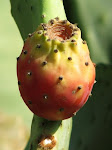Under explosion circumstances, the 'missing' are usually dead humans in an unidentifiable condition.
I happen to know a religious young man who's a volunteer at ZAKA Rescue Unit; his task and that of his colleagues on the team, isׂ (among other things) to collect body remains scattered in the area of the disaster, and help with the identification job of the forensic technician. It sounds horrible; it is horrible, but someone has to do it.
ZAKA, a civilian volunteer organization founded in Jerusalem in 1995 (activity started several years earlier), has as its motto: "saving those who can be saved, honoring those who cannot". ZAKA also operates internationally offering assistance in mass disasters around the world (eartquakes, zunamis, terrorism etc..). They were probably present on the Manchester scene too. Kudos to them for their holy work!
We all know that "prevention is the best cure". This applies not only to health issues , but to other issues as well.
We all know that "prevention is the best cure". This applies not only to health issues , but to other issues as well.
The Manchester suicide bomber, so we're told ,was on the list of 'subjects of interest'. So, what exactly did those with the "list" do about it? Nothing, it seems; absolutely nothing! Now, they're investigating.... Good Luck with that, but there is no time; terrorism has a dynamics of its own.
























































